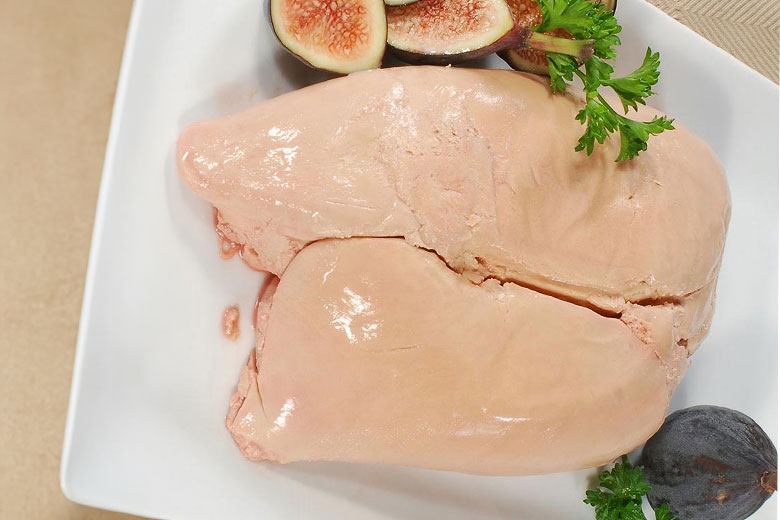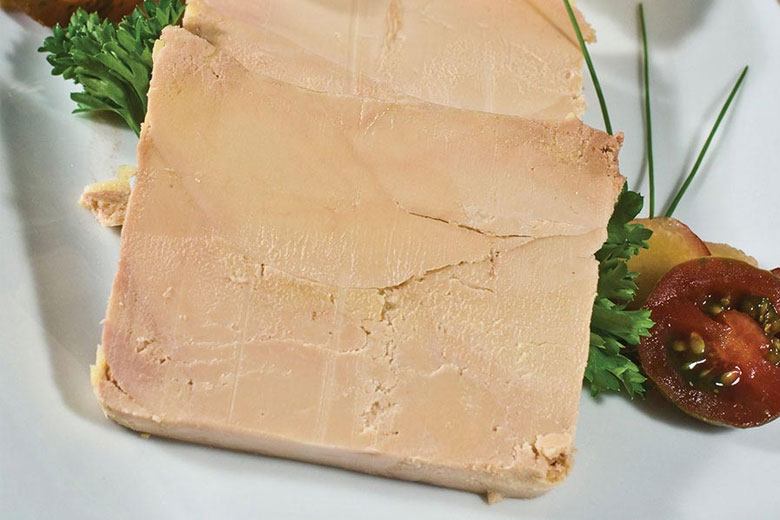Have a penchant for paté, but unsure if it’s part of a healthy diet? Read on and put those doubts to rest as we sort facts from fiction and debunk the myths surrounding foie gras!
A Rich History
Since man first began to write about food and the practices surrounding its preparation, liver has ranked above all other offal as one of the most prized. Whether mixed with truffles and cognac to create a refined patés de foie gras or savored by a victorious warrior on the battlefield, liver’s heritage is long and illustrious.
Featuring prominently in cuisines around the world, some cultures placed such importance on this one food that human hands weren’t even allowed to touch it; special utensils made just for its preparation were used instead. During the Han dynasty, liver was listed as one of the Eight Delicacies. In fact, throughout most of recorded time, humans have chosen liver over steak, regarding it as a source of great strength.

Your Favorite Superfood
So what’s so special about liver? In simplest terms, gram for gram, date shows duck liver contains more nutrients than any other food, providing not only high-quality protein but also folic acid, Iron, CoQ10, and a handful of essential trace elements, not to mention a concentrated source of vitamin A and all the B vitamins. A veritable superfood, all these excellent nutrients make it into your Foie Gras, so don’t be afraid to savor a slice or two.
The Good Fats in Foie Gras
Rich, decadent, and bursting with savory flavor, Foie Gras feels like an indulgence because it is. High in fat and calories, its luxurious texture and voluptuous characteristics are not the signs of a food that is bad for you but rather one that promotes health!
While many are still fearful of fat, if modern nutritional research has taught us anything, it’s that certain fats, like the monounsaturated variety found in Foie Gras, are an excellent addition to a well-balanced diet and a healthy lifestyle. They work by lowering the levels of bad cholesterol and raising the good. Highly anti-inflammatory, regular intake of this decadent food may help lower the risk of heart disease. So indulge with abandon, knowing that your favorite luxe ingredient is good for you!

Eat like The French
Known for their rich foods and comparatively indulgent diets, the French lifestyle has long baffled the modern eater. But gourmands and food enthusiasts know that avoiding good animal-derived fats is not the key to health, but rather, the inverse that is true. Loaded with saturated fats from triple cream cheeses, butter, eggs, sausages, and meats these calorie-dense foods promise flavor as well as excellent nutritional benefits.
And what better proof is there than the fact that the French have lower rates of coronary disease than many other Western countries? In the Gascony region, where goose and duck liver form a staple of the diet, this rate is the lowest in the country!

Foie Gras In Your Diet
From pan-searing slices or chunks to enjoying it in terrines, patés, torchons, or mousse, there’s no end to the delicious ways to relish the tastes and textures of premium foie gras! An important part of a varied and wholesome diet, indulge in your bloc, mousse, or lobe of foie gras without the guilt, and what better to pair it with than a glass of antioxidant-rich French wine? Bon appetit!
Foie Gras Accompaniments
When it comes to serving foie gras, selecting the right accompaniments can enhance its rich, luxurious flavor. Here are the top 10 examples of accompaniments for foie gras:
- Bread: Freshly baked or lightly toasted country bread, baguettes, Poilâne-style sourdough, and fruit bread are excellent choices. The contrast between the crunchy bread and the creamy foie gras is delightful.
- Sweet Wines: Foie gras pairs exceptionally well with sweet wines like Sauternes, Jurançon, Monbazillac, and late harvest Alsace wines such as Tokay-Pinot Gris and Gewurztraminer. These wines complement the richness of foie gras with their syrupy sweetness.
- Champagne: A good Champagne can also be a wonderful accompaniment, providing a bubbly contrast to the creamy texture of foie gras.
- Truffles: Adding truffles enhances the earthy, luxurious flavor of foie gras. This pairing is particularly traditional and highly esteemed in French cuisine.
- Fruit Compotes and Jams: Sweet and tangy fruit compotes or jams, such as fig, apple, or pear, provide a delightful contrast to the savory richness of foie gras. Onion or fig confit, as well as mango chutney, are popular choices.
- Dried Fruits and Nuts: Dried fruits like apricots or raisins and nuts such as almonds or walnuts add a crunchy and sweet dimension to the dish.
- Spices and Herbs: Spices such as cinnamon, star anise, and cloves, especially in the form of gingerbread toast, complement the flavors of foie gras beautifully.
- Pickles: Cornichons or other pickled vegetables provide a tangy counterpoint that cuts through the richness of foie gras.
- Salad Greens: Lightly dressed salad greens can offer a refreshing contrast and balance to the decadent foie gras.
- Honey: A drizzle of honey can enhance the natural sweetness of foie gras and add an additional layer of flavor complexity.
These accompaniments not only elevate the taste experience but also honor the traditional French ways of serving foie gras, making it a standout dish at any gathering.